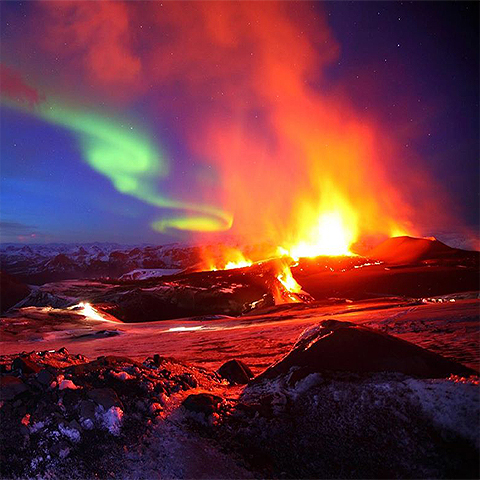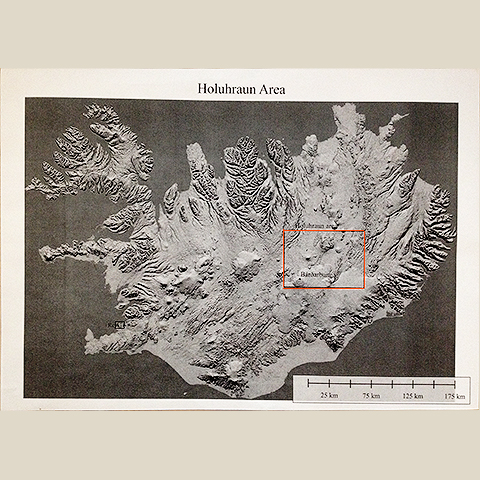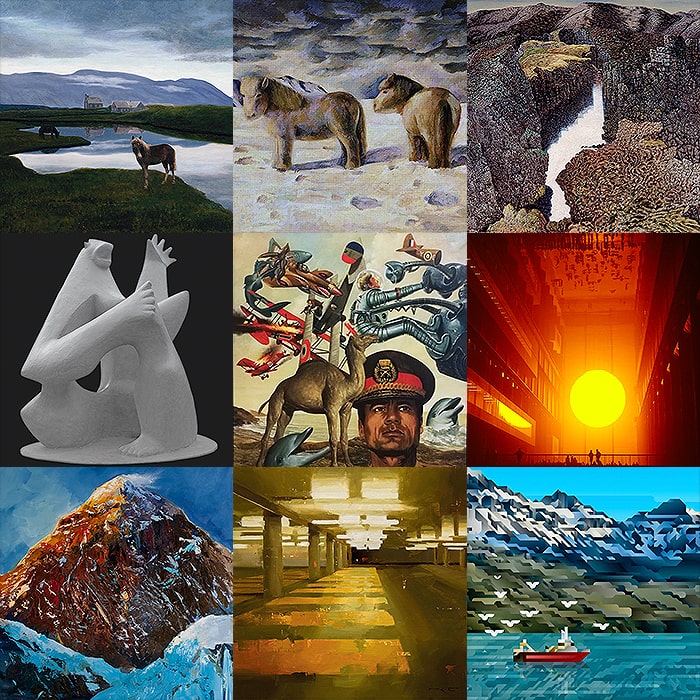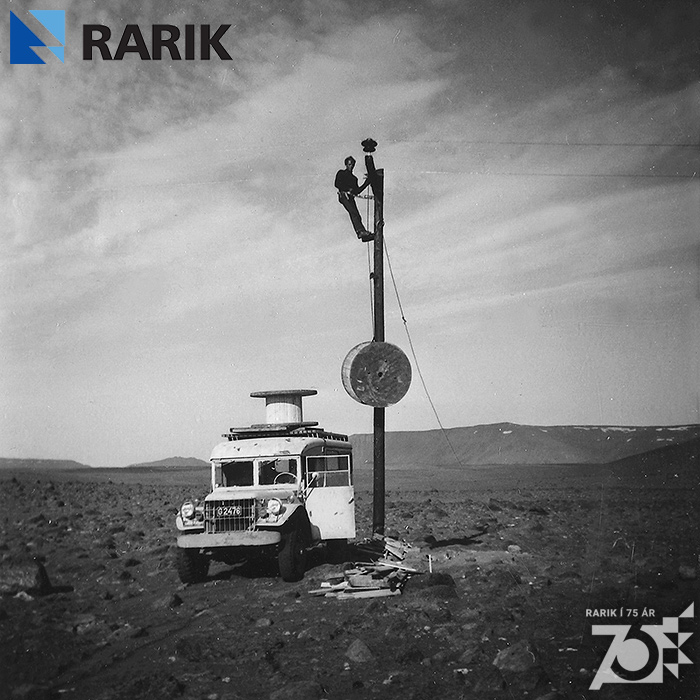Iceland's Bárðarbunga volcano is still erupting continuously

I have just returned from a two week vacation in Iceland, and was fortunate enough to join in a sightseeing fly-by of the current Bárðarbunga / Holuhraun eruption. The above picture (not related to my fly-by) is courtesy of Paolo Sicoli and captures the essential magic of Iceland, in this instance two of nature’s most wonderful phenomena - volcanic eruption with the added sparkle of the northern lights.
Flight NY 1808 was a special scheduled daytime flight by national inland airline Air Iceland - departing from the actual Reykjavík Airport (not to be confused with Keflavík which is the seat of the International airport). Flight-time was near enough 2 hours - with 45 minutes of journey time each way, and 30 minutes sightseeing of the actual eruption and neighbouring areas. There were 25 of us in the Fokker 50 - window seats only, and including volcanologist Steindór who was our guide.
The flight coincided with the best weather of my vacation - clear blue skies, at least from Hofsjökull onwards - one of only 3 rain-free days during my stay. For most of the approach flight the airplane remained above the cloudline, but as we neared Vatnajökull - Europe’s largest ice cap, and the location of the source of the eruption, we moved lower to get a good view of the surrounding landscape.
The first thing you see is the steaming lava field of Holuhraun, now nearing 40kmsq, then a molten river of lava, followed by the 3 current active spouts of the eruption, the original spout (which would make 4) is no longer active. The precursor to the eruption was a series of earthquakes starting August 16th - more than 1,000 per day - most with an epicentre in a channel between the Bárðarbunga caldera and the Dyngjujökull part of Vatnajökull. (see inset map below)
The eruption started at 00:02 on the 29th August when a fissure opened up roughly 5km north of Dyngjujökull - circa half-way between Dyngjujökull and the currently inactive Askja caldera which contains a most wonderfully green-hued lagoon. The root volcano system is Bárðarbunga - the caldera of which is gradually subsiding and which lies some 30km to the southwest of the erupting fissure.
You can view the 3 shots I took in the below sequence (after the map references). The best video footage I could find from circa the same time, came from a lower level helicopter flight. Although excellent viewing, the altitude and small speckled windows of the Fokker 50 were not exactly conducive to great photography. My eruption shots were achieved at maximum zoom...
I would have loved to have gone closer, to feel the 1,000 degree heat and hear the roar of the eruption, but the area is now quite toxic with sulphur dioxide gas, some of which has made its way to Reykjavík, resulting in a slight haze over the capital. Volcanologists are currently in two minds about the gradual subsidence of the main Bárðarbunga caldera - it’s sinking roughly 40cm each day. Some see this as an entirely good thing, whilst several others warn that a bigger, more explosive, sub-glacial eruption is imminent. The latter of the two scenarios would likely have a significantly worse impact than the Eyjafjallajökull eruption of 2010 - of course depending on prevailing wind directions.
It’s a rare privilege to witness first-hand the volatile nature of our planet Earth, and how fragile all life can be. One of the most amazing things I learnt is that there is typically at least one volcano under each of Iceland’s glaciers / icecaps - the larger ones obviously have many more. There has been a significant amount of both seismic and volcanic activity this year around the globe, and with two of Iceland’s most frightening volcanoes also imminent - Katla and Hekla have been overdue for some years now. Perhaps it’s time to start saving up that bottled water and canned food ... ![]()


Did you find this content useful?
Thank you for your input
Thank you for your feedback
Upcoming and Former Events
Affino Innovation Briefing 2024
Webinar - Introduction to Affino's Expert AI Solutions - Session #2
Webinar - Introduction to Affino's Expert AI Solutions - Session #1
PPA Independent Publisher Conference and Awards 2023
Meetings:
Google Meet and Zoom
Venue:
Soho House, Soho Works +
Registered Office:
55 Bathurst Mews
London, UK
W2 2SB
© Affino 2024






















